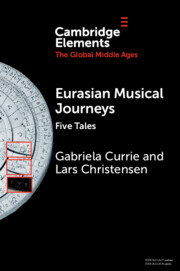Shihong, Yao 姚士宏. 1983–
1985. “
Kejiru sekkutsu hekiga no gakubu keishō キジル石窟壁画の楽舞形象 [Musical Instruments and Dancing Depicted as They Appear in Wall Paintings at the Kizil Grottoes].” In
Kijiru Sekkutsu キジル石窟壁画 [
The Caves of Kizil] by Shinkyō Uiguru Jichiku Bunbutsu Kanri Iinkai 新疆ウイクル自治区文物管理委員会 [Xinjiang Uighur Autonomous Region Committee for Cultural Relics] and Haijōken Kijiru
Senbutsudō Bunbutsu Hokanjo 拝城県キジル千仏洞窟文物保管所 [Baicheng-xian Kizil Thousand Buddha Caves Cultural Relics Preservation Center],
237–57.
Chūgoku sekkutsu 中国石窟 [
The Grottoes of China], vol.
2.
Tokyo:
Heibonsha.
Google Scholar 


